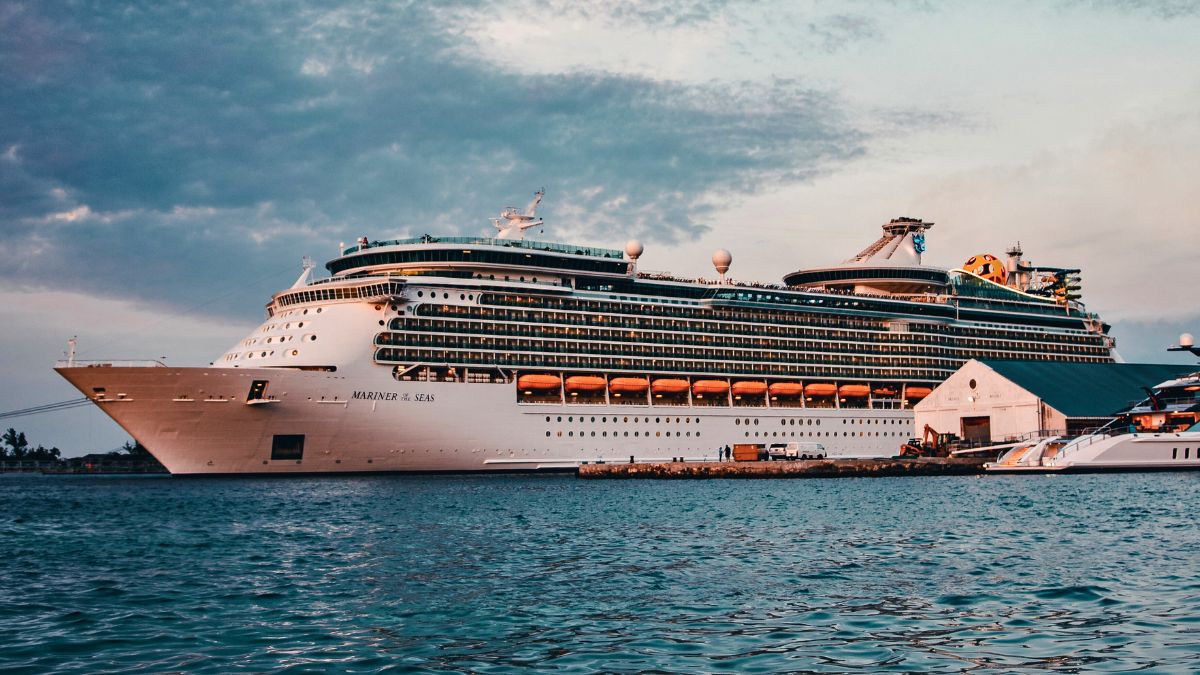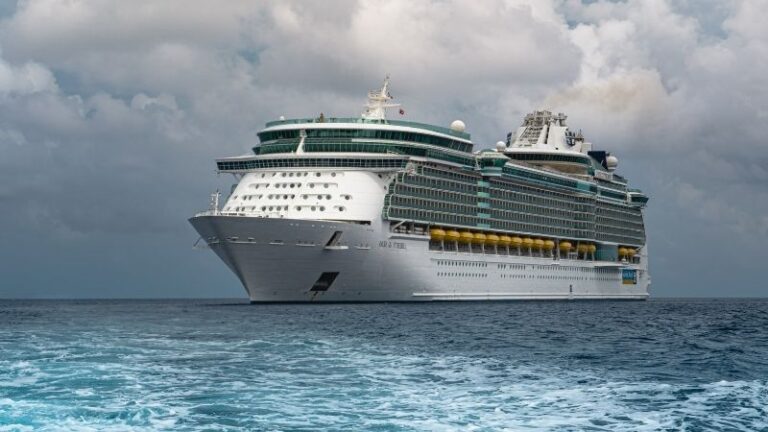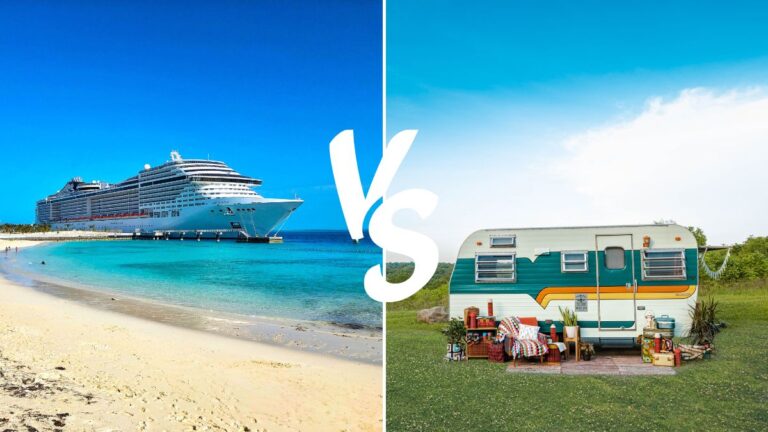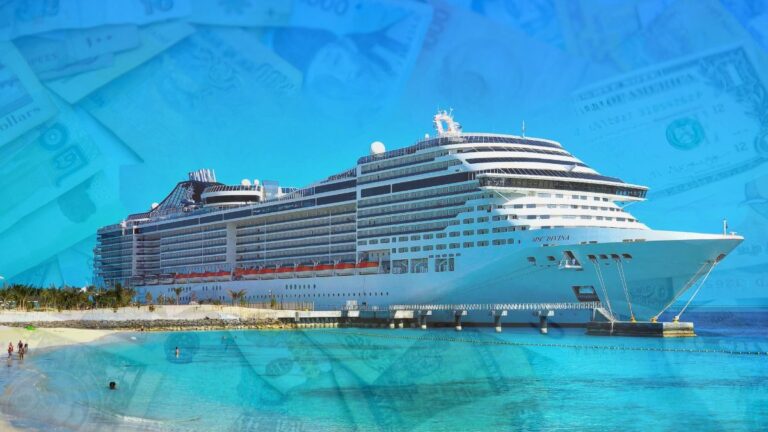Budgeting for a Cruise: Hidden Costs and Saving Tips

As participants in Amazon Associates and other programs, we earn from qualifying purchases. This comes at no additional cost to you. For more details, see our Affiliate Disclosure.
Going on a cruise can be an exciting and memorable experience, but it’s important to be aware of the hidden costs that can add up quickly. From gratuities to shore excursions, there are many expenses that can catch you off guard if you’re not prepared.
In this article, we’ll explore some of the hidden costs associated with cruising and provide tips for saving money so you can enjoy your trip without breaking the bank.
The Importance of Budgeting for a Cruise
Ensuring that your dream vacation doesn’t turn into a financial nightmare requires careful planning and a comprehensive understanding of all possible expenses. A cruise, unlike most land-based vacations, is a microcosm of costs, both obvious and hidden.
These costs can range from the straightforward price of your cabin to more obscure expenses such as gratuities, specialty dining, and excursion fees. It’s easy to get swept away by the excitement of embarking on a luxury liner and lose sight of these extras. However, by planning your budget diligently, you can keep your spending in check while still enjoying all the amenities and experiences your cruise has to offer.
The key to successful budgeting lies in understanding the true cost of your cruise. This includes not only the upfront price of your ticket but also a myriad of hidden fees and expenses that could potentially arise during your journey. By anticipating these costs, you can avoid financial stress and focus on making the most out of your vacation.
Therefore, budgeting for a cruise isn’t merely a practical consideration; it’s an essential step in ensuring your vacation is enjoyable, relaxing, and worry-free.
Hidden Costs to Consider
Hidden costs can make a significant impact on your cruise budget. While your cruise fare typically includes meals, entertainment, and your accommodation, there are a plethora of additional expenses that are not so evident at the booking stage. Being mindful of these hidden costs will help you to budget more accurately and avoid unexpected surprises. Here are some of the key hidden costs to consider:
- Gratuities: Cruise lines often add gratuities to your onboard account, usually per person, per day. These tips go to the service staff and can add up quickly.
- Specialty Dining: While meals in the main dining room and buffet are typically included in your cruise fare, specialty restaurants usually come with an extra cost.
- Drink Packages: If you’re planning to enjoy a few cocktails or speciality coffees, keep in mind that these usually aren’t included in the cruise fare. Consider the cost of a drink package, but make sure it will be worth it for your consumption.
- Shore Excursions: Excursions arranged by the cruise line can significantly increase your overall cruise cost. Consider this when planning port visits.
- Internet Access: Staying connected at sea often comes at a steep price. Check internet package rates in advance and consider digital detox to save money.
- Spa Treatments and Fitness Classes: Spa services and certain fitness classes typically come with an extra fee.
- Onboard Activities: While many activities are included, some, such as wine tastings, bingo, or craft classes, may have additional charges.
- Photos and Souvenirs: Professional photos taken by cruise ship photographers can be tempting but often carry a high price tag.
- Travel Insurance: While this isn’t a hidden cost, it’s often overlooked. Insurance can cover unforeseen issues like medical emergencies or trip cancellations.
By identifying and anticipating these hidden costs, you can make informed decisions about what is worth splurging on and what can be skipped, making your cruise vacation both memorable and budget-friendly.
Saving Money on Gratuities
Gratuities or tips on a cruise can significantly add to your vacation cost. However, it’s important to understand that these fees help supplement the incomes of the hardworking service staff who are dedicated to making your voyage enjoyable. That said, there are a few strategies you can employ to help manage the cost of gratuities without shortchanging the crew:
- Understand the Gratuities Policy: Different cruise lines have different policies regarding gratuities. Some automatically charge a daily rate to your onboard account, while others include gratuities in the cruise fare. Know what your chosen cruise line’s policy is before you embark.
- Prepay Your Gratuities: Some cruise lines allow you to prepay your gratuities before your trip. This option helps in budgeting your expenses in advance, so you don’t have to worry about it during your vacation.
- Consider Adjusting the Gratuity Amount: If the service you received was not up to par, most cruise lines allow you to adjust the gratuity amount at the end of the cruise. But remember, this should be a measure of last resort, as many staff members depend on these tips for their income.
- Reward Exceptional Service Directly: If a particular staff member goes above and beyond, consider providing a direct tip. In this way, you ensure your gratitude goes straight to the individual who made your trip special.
- Factor in Gratuities When Choosing a Cruise Line: Some luxury cruise lines may have higher upfront costs but include gratuities and other extras in the cruise fare. When comparing prices, factor in these benefits.
Remember, gratuities are an essential part of cruise economy and often serve as an important income source for crew members who work tirelessly to make your cruise experience enjoyable. Employing these strategies should not be about avoiding gratuities, but about managing them responsibly in a way that fits within your overall cruise budget.
Saving Money on Dining and Drinks on a Cruise
While dining and drinks are part of the full cruise experience, they can also account for a substantial part of your budget, especially if you have a penchant for specialty restaurants, fine wines, or craft cocktails. Here are a few ways you can save on dining and drinks during your cruise:
- Take Full Advantage of Included Dining: Most cruises include multiple dining options in the fare. From buffets to main dining rooms, there’s usually a wide variety of food available without any additional cost.
- Set a Budget for Specialty Dining: Specialty dining can add a unique experience to your cruise, but the costs can add up. If you wish to enjoy these restaurants, set a budget beforehand and stick to it.
- Consider a Dining or Beverage Package: If you enjoy a variety of drinks or plan to dine in specialty restaurants multiple times, a dining or beverage package could offer value. Calculate how much you’d likely spend without the package to see if it’s worth it.
- Bring Your Own Wine: Some cruise lines allow you to bring a limited quantity of wine onboard. There may be a corkage fee in restaurants, but you can usually drink it in your cabin for free.
- Refillable Souvenir Cups: Cruise lines sometimes offer refillable cups that provide value if you plan on indulging in soft drinks regularly.
- Take Advantage of Drink Specials: Many cruises offer happy hours or drink specials at certain times. Keep an eye out for these and plan your refreshments accordingly.
- Skip the Mini Bar in Your Cabin: The convenience of the mini-bar comes at a steep price. It’s cheaper to get your drinks from the bar.
- Hydrate for Free: Tap water, regular coffee, tea, and certain juices are usually available for free on the ship. Pack a reusable water bottle to keep yourself hydrated without the extra cost.
With these tips, you can indulge in the culinary delights on offer without feeling the pinch in your wallet.
Shore Excursions: How to Save
Exploring various ports of call and immersing yourself in different cultures is a significant part of the cruising experience. However, shore excursions arranged by the cruise line can be quite expensive. The good news is, there are ways to enjoy these adventures without blowing your budget. Here are some tips on how to save on shore excursions:
- Research and Book on Your Own: Instead of booking through the cruise line, consider arranging your own excursions. You can often find local tour operators offering similar experiences at a fraction of the price. Just be sure they have good reviews and are reliable.
- Join Cruise Community Forums: Platforms like Cruise Critic can be invaluable resources for budget-conscious travelers. They provide a platform for past and present cruisers to share tips, including reputable and affordable local tour operators.
- Group Up with Fellow Travelers: If you’ve met some like-minded people onboard, consider going in together on a private tour. The cost per person often goes down with the size of the group.
- Explore On Your Own: Not every port requires a guided tour. Some are perfect for self-guided exploration. Research each port beforehand to determine if you can navigate the area on your own.
- Book in Advance: Some excursion companies offer early booking discounts. Once you have your itinerary, start researching and planning your excursions.
- Consider Travel Cards and City Passes: If you’re visiting a major city, consider purchasing a city pass or travel card that offers entry to multiple attractions for one price.
- Prioritize Your Excursions: You don’t need to have a shore excursion at every port. Prioritize your must-dos and consider cheaper activities, like a beach day or city tour, at the other ports.
While shore excursions can be a significant part of your cruise budget, they don’t have to break the bank. With a bit of research and planning, you can enjoy unforgettable experiences without overspending.
Internet and Communication Costs at Sea
Internet connectivity and communication while at sea is a modern necessity for many, yet it can add a substantial cost to your cruise budget. Cruise ship internet is notoriously expensive, and mobile roaming charges can be astronomical if not managed correctly. Here are a few ways you can keep these costs under control:
- Evaluate Your Needs: Do you really need to be connected all the time? If not, consider disconnecting during your cruise. This digital detox can enhance your relaxation and help you truly get away from it all.
- Internet Packages: If you need to stay connected, consider purchasing an internet package from the cruise line. These packages vary in price and connectivity level, so assess your needs before buying.
- Daily Deals: Some cruise lines offer daily deals on their internet packages, especially on embarkation day. Be sure to check for these deals to save money.
- Limited Use: If you only need to check in occasionally, you could log in, download your emails, and then log out to read and compose replies offline. You can then log back in to send them, thus reducing your online time.
- Take Advantage of Port Days: Many ports will have cafes or restaurants with free Wi-Fi. You can save by connecting while ashore and disconnecting while at sea.
- Use Data Wisely: If you’re planning on using your phone’s data, make sure you understand the roaming charges, and consider buying a data package from your service provider. Be sure to switch to airplane mode while at sea to avoid unexpected roaming charges.
- Communicate Onboard for Free: If you’re traveling with a group and need to stay in touch onboard, consider using walkie-talkies or an onboard chat function if your cruise line’s app offers one. This can help you avoid expensive ship-to-shore call charges.
Internet and communication costs at sea can be high, but with careful planning, it’s possible to stay connected without breaking the bank. Always remember to double-check all charges and packages before you leave, and only pay for what you truly need.
Saving on Onboard Activities
A cruise ship is a floating resort packed with a myriad of activities. While many of these are included in your cruise fare, some come with an additional price tag. If you’re looking to enjoy a wide range of onboard activities without adding a hefty sum to your bill, consider these tips:
- Plan Ahead: Before you board, review the cruise line’s website or call their customer service line to get an idea of what activities might cost extra. Knowing in advance can help you budget and prioritize.
- Take Advantage of Free Activities: Every cruise ship offers a host of activities included in your fare, like pool games, dance classes, fitness centers, lectures, movies, and trivia contests. Be sure to take advantage of these.
- Look for Package Deals: If you’re interested in something that does carry an extra charge, such as spa treatments or wine tastings, look for package deals. These often provide a discount compared to purchasing services individually.
- Keep an Eye Out for Special Offers: Once on board, look out for daily specials. These can include discounts on spa treatments on port days or special deals on classes or tastings.
- Bring Your Own Entertainment: If you’re content with a good book by the pool or a deck of cards for a quiet evening in, pack these in your luggage. It’s free and can be just as enjoyable as paid activities.
- Use Your Cabin’s Entertainment Options: Your cabin’s TV will often have free movies or informational channels about the ship and its destinations. This can provide free entertainment during downtime.
Remember, a cruise vacation should be about enjoyment. There’s no need to spend on every activity.
Cruise Travel Insurance: Do You Really Need It?
Travel insurance is often overlooked in the planning stages of a cruise, considered an unnecessary extra cost. However, it’s crucial to understand the role travel insurance can play in protecting your investment and well-being while on your voyage.
A comprehensive travel insurance plan can offer protection in various scenarios:
- Trip Cancellation or Interruption: Should an unexpected event such as illness, a death in the family, or a significant work obligation force you to cancel or cut short your trip, travel insurance can cover the non-refundable costs associated with your cruise.
- Medical Emergencies: While cruise ships have onboard medical facilities, serious illnesses or injuries may require evacuation to a hospital on land, a process that can be incredibly costly. Travel insurance can help cover these costs and ensure you receive appropriate medical care.
- Travel Delays: If travel delays cause you to miss your cruise departure or an important connection during the trip, insurance can cover associated costs.
- Lost or Delayed Baggage: Travel insurance can provide compensation for lost, stolen, or delayed baggage, helping to cover the cost of replacement items.
While it’s true not every trip requires insurance, and some credit cards offer basic travel insurance as a perk, it’s worth considering for a cruise. Given the significant upfront costs, the international nature of the trip, and the potential for high healthcare costs in the event of an emergency, the protection provided by travel insurance often outweighs the additional cost.
However, it’s essential to read the policy carefully to understand what is covered and under what circumstances the coverage applies. Look out for exclusions and understand the process for making a claim. By doing so, you can make an informed decision about whether travel insurance is necessary for your cruise vacation.
Enjoying Your Cruise Without Breaking the Bank
The allure of a cruise vacation is hard to resist. Picture yourself on the deck of a grand liner, soaking in the sun and the endless ocean views, dining on gourmet food, enjoying top-notch entertainment, and exploring exotic destinations. While all these come with a price tag, it’s entirely possible to enjoy your cruise vacation without breaking the bank.
Start with careful planning and budgeting. Understand that the upfront cost of a cruise is just part of the total expenditure. It’s crucial to anticipate hidden costs that can sneak up on you. These can include gratuities, specialty dining, drink packages, shore excursions, internet access, spa treatments, fitness classes, onboard activities, professional photos, souvenirs, and travel insurance.
Saving on these extras doesn’t mean depriving yourself of the full cruise experience. You can enjoy specialty dining and drinks by setting a budget or taking advantage of dining or drink packages. When it comes to shore excursions, research and book on your own, group up with fellow travelers, or explore ports on your own. As for internet and communication, evaluate your needs, and choose the most cost-effective package.
Remember to take full advantage of free onboard activities, plan ahead, look for package deals, or bring your own entertainment. And finally, consider getting travel insurance. It might seem like an additional cost, but it could save you from much higher unforeseen expenses.
In the end, the key to enjoying your cruise without breaking the bank lies in balancing your desires with a budget-conscious approach. Armed with these strategies, you can make your cruise vacation both memorable and affordable.






